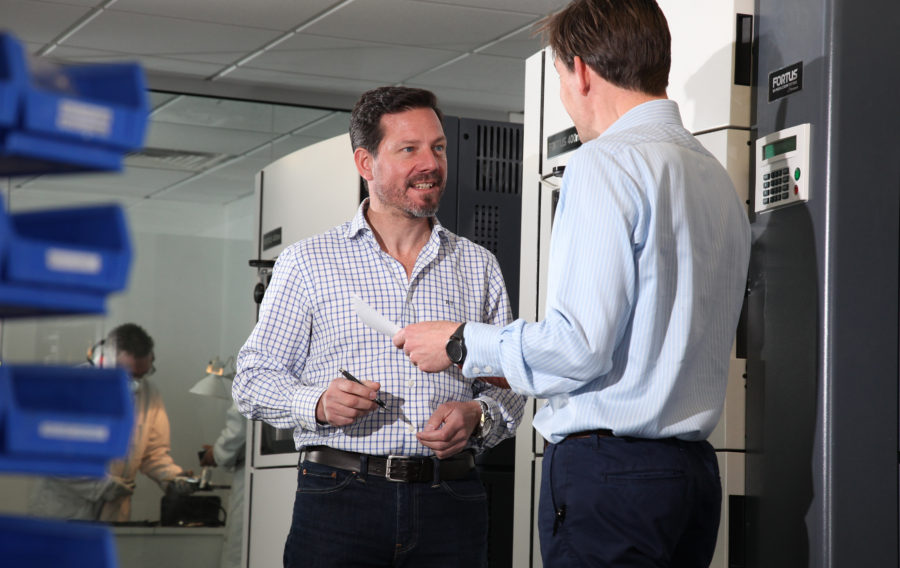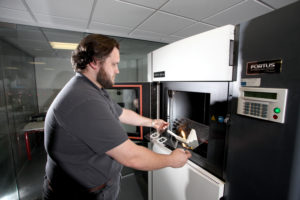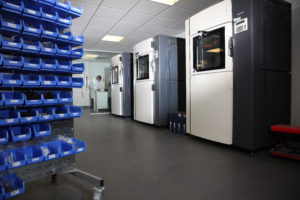
The 2015 National Security Strategy and Strategic Defence and Security Review prioritised innovation by welcoming more transferrable technology into the MOD marketplace, outlining plans to help SMEs and new partners into the supply chain.
Here, Kieron Salter, Managing Director of transferrable tech firm KW Specialist Projects, tells MOD DCB features editor Julie Shennan how civilian companies can gain a foothold in defence.
In the 2015 National Security Strategy and Strategic Defence and Security Review (SDSR) the Government outlined its efficiency and innovation plans for the UK defence marketplace. It suggested this could be achieved by ‘welcoming inward investment and new entrants into the defence and security sector’. In layman’s terms, this means encouraging civilian suppliers of R&D and manufacturing to start selling to defence, thereby transferring their technology.
The report stated:
“We will take action to enable SMEs and non-traditional suppliers to bid for defence and security contracts more easily. Building on the existing Defence Suppliers Forum, we have established dedicated forums to focus on the needs of small and medium sized suppliers to ensure that we understand their concerns and priorities, and can maximise their contribution to our national security.”
This pledge matches the Government’s agenda to place 25 per cent by value of defence spend with SMEs by 2020. It also demonstrates a shift in attitude towards embracing more innovative procurement proposals, often associated with SMEs.
 One SME which has benefited from the transferrable technology market is KW Specialist Projects (KWPS). Managing Director Kieron Salter explained how the company had expanded from the civilian sector into defence.
One SME which has benefited from the transferrable technology market is KW Specialist Projects (KWPS). Managing Director Kieron Salter explained how the company had expanded from the civilian sector into defence.
He said: “I spent about ten years working at Reynard Motorsports until it unfortunately went bust in 2002, at which point I had been running their specialist project and sports car division, so I decided to set up my own business with a guy called Ray Phillips. We set up KW Motorsport, primarily focused on racing cars.”
In 2002 the pair established a KW spin-off for special projects, KWSP, to take their expertise and transfer it to other sectors. KWSP’s subsequent projects brought it into the defence marketplace.
Mr Salter explained: “KWSP technology has been transferred into material such as a UAV training tool, which we used our in-house 3D printing technology to make more efficiently and quickly than traditional metal cutting and welding.”
Speaking of KWSP’s expansion into defence, he added: “The transferring of technology from the civil to the defence marketplace starts with the same process as any other brief; we start by identifying the problems outlined in the specific contract and then consulting with the experts to establish what the solutions might be. We look at situations in the past when other parties have faced similar problems and examine how these were tackled.”
Mr Salter stressed the importance of keeping an open mind when approaching a new marketplace. He said: “There is no ‘one size fits all’ answer to manufacturing solutions; by acknowledging this we can come up with innovative solutions.
“We apply the same design process to both defence and civilian projects. We operate with speed and are not afraid to take measured risks. We are not afraid to fail different stages along the way to get to the end solution. A lot of other sectors are averse to taking risks, but it pays off in specialist manufacturing.”
Trial and error – Mr Salter noted – is just one of the challenges faced by defence manufacturers: “Some of the biggest challenges that defence manufacturers face are in running short-track programmes that are also able to mitigate risk. All of these challenges are exacerbated by the short timeframes that defence manufacturers face.”
To meet these challenges, Mr Salter believes defence manufacturers must constantly remaster the tools of their trade. He explained: “KWSP invests in a lot of R&D to try and understand products in more detail. We learn new ways of using exsisting equipment that makes it more efficient, shortens the production time for manufacturers or increases production volumes for the same investment amount.
“You need to constantly push the limits of manufacturing, question whether your methods are still appropriate and adopt new technology when it emerges.”
New technology in today’s defence marketplace includes 3D printing and Computer Aided Design (CAD).
Mr Salter said: “One of the vital uses of 3D printing, both in motorsport technology and in defence, is to print fixtures and fittings which otherwise might be hard to procure. This shortcuts the manufacturing process by minimising the amount of tooling you need to manufacture and making low-cost fixtures.”
He added: “Another way the manufacturing process can be sped up is by clever use of CAD technology. Although CAD has been around for a while it has been underused. Now – with additive manufacturing and the ‘Internet of Things’ – you can propagate it through a whole range of products later on, including issue changes and instruction manuals.”
Looking to the future of defence manufacturing, Mr Salter predicts traditional requirements will remain at the fore, such as increasing the endurance while reducing the weight of the technology deployed.
Lightweight technology has become very important to the UAV and motor industry markets alike; this in turn will boost the drive toward fuel efficiencies so that material doesn’t have to carry so much fuel.”
 As well as optimising their technology to supply to defence, Mr Salter suggests that tech companies should also optimise their attitudes.
As well as optimising their technology to supply to defence, Mr Salter suggests that tech companies should also optimise their attitudes.
He argued: “Would-be defence suppliers should be prepared to meet with a low risk-taking attitude and be prepared to fully listen to the problems the industry faces before suggesting solutions.
“When people enter the defence marketplace they must be patient; it might take a while before you see any useful business coming out of it. This can be quite different to a company’s usual pace of work, but it is worth sticking in at.”
One way of breaking down these barriers to business is by attending defence conferences.
Mr Salter said: “Once you identify defence as an area in which you would like to do business then you really have to start going to the networking events and actively seeking opportunities.
“There is a lot of business support out there for SMEs. KWSP got its support from working with Innovate UK, which allows SMEs to forge their own deals. The Motorsport Industry Organisation has also done a lot of work with SMEs in highlighting the opportunities that are available in the defence marketplace.”
While industry has helped welcome new suppliers to the defence marketplace, Mr Salter reflected there is still more work to do.
He said: “Defence primes should look to engage with SMEs on things like case studies, so that SMEs can get some credibility for the work to which they have contributed. This shows other employers the way in which these SMEs may be of use to them. Companies like Thales have good initiatives such as innovation groups that target SMEs with business opportunities.”
It’s really about breaking down the silos and allowing SMEs to benefit from the financial power that primes have.”
If you would like to join our community and read more articles like this then please click here
2015 Strategic Defence and Security Review (SDSR) 3D Printing Computer Aided Design Defence defense Innovation KW Specialist Projects procurement SDSR SME SMEs specialist manufacturing supply chain transferrable technology








